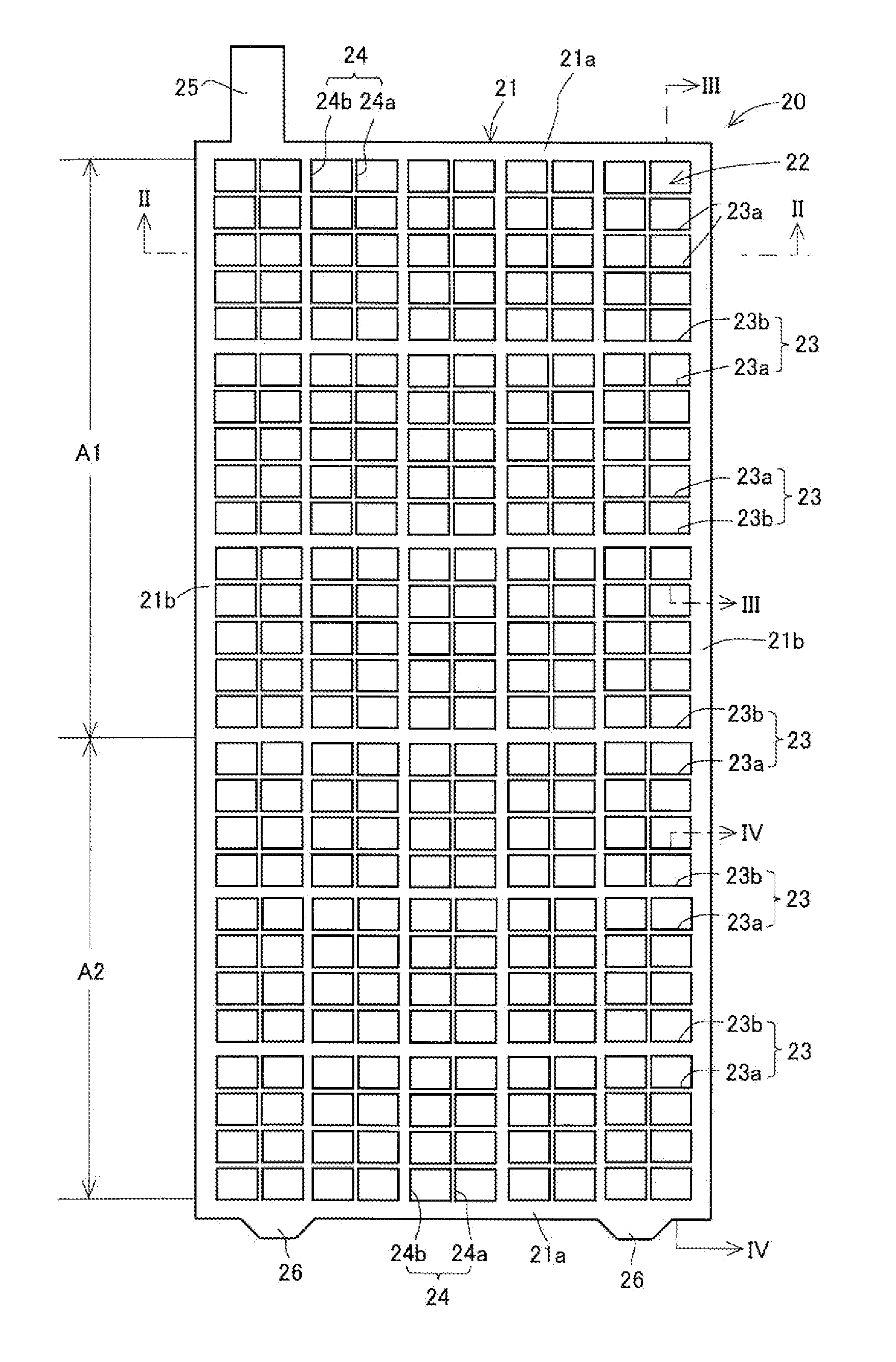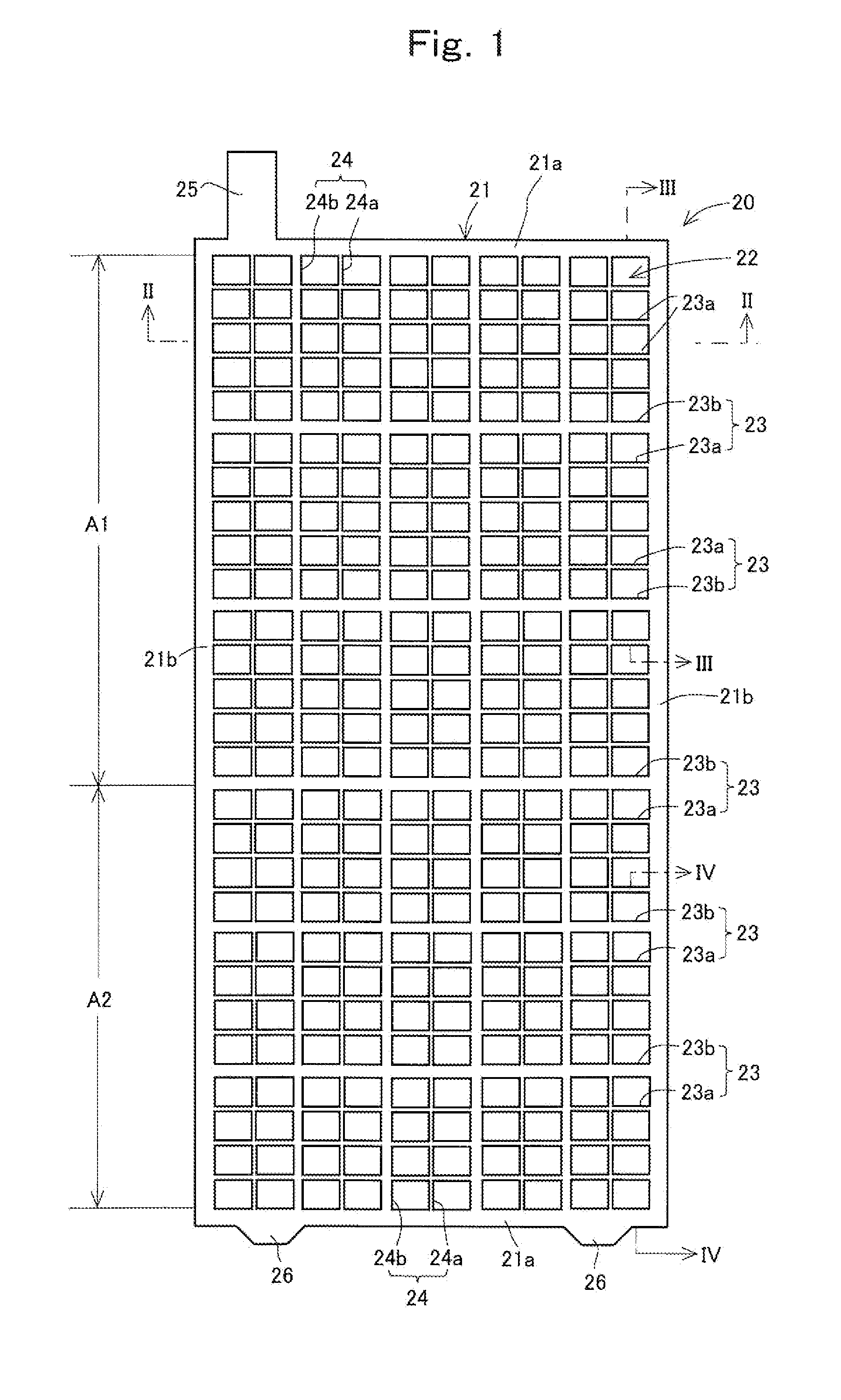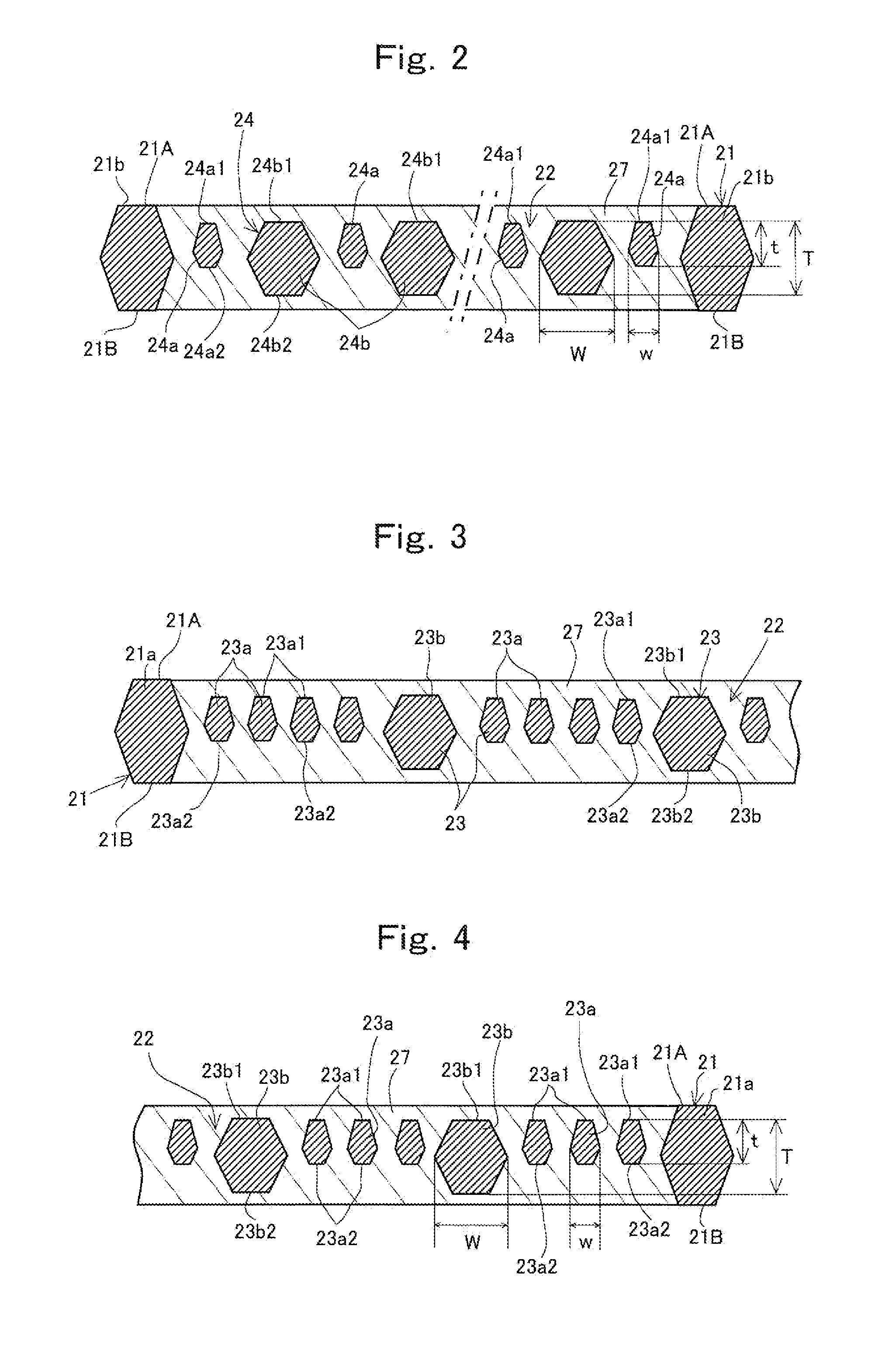Grid plate for lead acid storage battery, plate, and lead acid storage battery provided with same plate
a lead acid storage battery and lead acid technology, applied in the direction of lead-acid accumulator electrodes, cell components, basic electric elements, etc., can solve the problems of acid storage battery to the end of its service life, disadvantageous lithium ion batteries and nickel-hydrogen batteries in terms of price, etc., to increase the mechanical strength of the grid, reduce the effect of mechanical strength
- Summary
- Abstract
- Description
- Claims
- Application Information
AI Technical Summary
Benefits of technology
Problems solved by technology
Method used
Image
Examples
example 1
[0153]In the grid plate C, the longitudinal grid strands and the lateral grid strands were disposed inside the grid strands in the pattern shown in FIG. 1. In the same manner as the grid plate B, the longitudinal dimension of the frame section was 385 mm, the lateral dimension was 140 mm, the thickness was 5.8 mm, and the width was 4.4 mm. Longitudinal grid strands and lateral grid strands having thick strands and thin strands, as shown in FIG. 1, were formed inside the grid strands. The cross-sectional shape of the thick longitudinal strands 24b and the thick lateral strands 23b was a hexagonal shape in which the thickness was greater than the width. The thickness was 5.4 mm and the width was 4.3 mm. The cross-sectional shape of the thin longitudinal strands 24a and the thin lateral strands 23a was a hexagonal shape in which the thickness was greater than the width. The thickness was 3.6 mm and the width was 2.8 mm. In the grid plate C, the end faces 24a1, 23a1 of one end side in t...
example 2
[0154]In the grid plate D, the longitudinal dimension of the frame section was 385 mm, the lateral dimension was 140 mm, the thickness was 5.8 mm, the width was 4.4 mm, as with the grid plate B. Among the strands formed inside the frame section, the cross-sectional shape of the lateral grid strands was a hexagonal shape in which the thickness was greater than the width in the same manner as the grid plate A (FIG. 12), and all of the lateral grid strands had a thickness of 3.2 mm and a width of 2.4 mm. The number of lateral grid strands was 26. On the other hand, thick longitudinal strands and thin longitudinal strands were provided as the longitudinal grid strands, and the cross-sectional shape of the thick longitudinal strands and the thin longitudinal strands was a hexagonal shape in which the thickness was greater than the width, as with the grid plate C. In this case, the thickness of the thick longitudinal strands was 5.4 mm and the width was 4.3 mm; and the thickness of the th...
example 3
[0155]In the grid plate E, the longitudinal dimension of the frame section was 385 mm, the lateral dimension was 140 mm, the thickness was 5.8 mm, and the width was 4.4 mm in the same manner as the grid plate B. Among the grid strands formed inside the frame section, the longitudinal grid strands were formed using similarly configured strands having a hexagonal cross-section measuring 3.2 mm in thickness and 2.4 mm in width, as with the grid plate A. On the other hand, thick lateral strands and thin lateral strands were provided as the lateral grid strands, the thick lateral strands having a hexagonal cross-sectional shape with thickness of 5.4 and a width of 4.3 mm in the same manner as the grid plate C, and the thin lateral strands having a hexagonal cross-sectional shape with a thickness of 3M mm and a width of 2.8 mm. In this case as well, the end portions 24a1, 23a1 of one end side in the thickness direction of the thin longitudinal strands 24a and the thin lateral strands 23a,...
PUM
| Property | Measurement | Unit |
|---|---|---|
| voltage | aaaaa | aaaaa |
| thickness | aaaaa | aaaaa |
| size | aaaaa | aaaaa |
Abstract
Description
Claims
Application Information
 Login to View More
Login to View More - R&D
- Intellectual Property
- Life Sciences
- Materials
- Tech Scout
- Unparalleled Data Quality
- Higher Quality Content
- 60% Fewer Hallucinations
Browse by: Latest US Patents, China's latest patents, Technical Efficacy Thesaurus, Application Domain, Technology Topic, Popular Technical Reports.
© 2025 PatSnap. All rights reserved.Legal|Privacy policy|Modern Slavery Act Transparency Statement|Sitemap|About US| Contact US: help@patsnap.com



